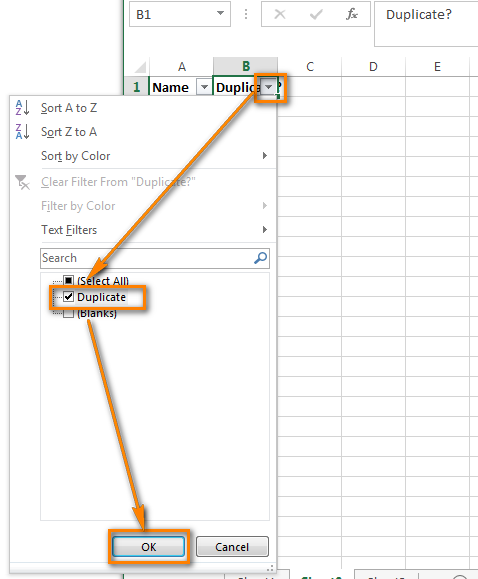
- Compare two columns in excel and change color how to#
- Compare two columns in excel and change color code#
Note that you can also change the color used for highlighting in the Conditional format rules panel. Notice that each value in column B that also appears in column A is highlighted. Once you click Done, the conditional formatting will be applied to column B: Then enter the following formula: =COUNTIF($A$2:$A$13,B2)>0 In the Conditional format rules panel that appears on the right side of the screen, click the dropdown menu next to Format cells if… and scroll to the bottom of the list and click Custom formula is. Then click the Format tab and then click Conditional formatting: We can use Conditional formatting to accomplish this.įirst, highlight cells B2:B13. Suppose we have the following two columns and we want to find which values in column B also belong to column A: Example 3: Find Which Values Belong to Both Columns This allows us to quickly see which team scored more points in each row. We can use the following syntax to compare values across two columns and find which values are greater: = IF ( A1 > B1, " Team 1", " Team 2" ) Example 2: Find Which Values are Greater & Less Than This allows us to quickly see which values match in each row between the two columns.
Compare two columns in excel and change color how to#
The following screenshot shows how to use this syntax in practice: We can use the following syntax to compare values across two columns and find which values are equal: = IF ( A1 = B1, " Yes", " No" ) Compare Two Columns to Find Which Values Belong to Both Columns Example 1: Find Which Values are Equal Compare Two Columns to Find Which Values are Greater / Less Thanģ. Compare Two Columns to Find Which Values are EqualĢ. The following examples show how to make the following comparisons between two columns:ġ. That’s it! Leave a comment below if you need help with any specific scenario.Often you may want to compare two columns in Google Sheets to look for similarities and differences. Ws.merge_range('R1:S1','compare R and S, highlight the greater #') In other cases, you might need to use absolute references to make this formula-based formatting work. If we want to apply the format to R3:R11, then the formula needs to be ‘=R3>S3’, etc.Īlso, note that in this case, we are comparing two columns so we don’t use absolute references in the formula. Ws.merge_range('B18:C18','with number input') Once we generate this in Excel, you’ll see that the formatting will change as we modify the values inside cells B19 and C19. In general, for any 'value' property we need to use an absolute reference.
Compare two columns in excel and change color code#
Pay close attention to the ‘ value' property in the code below – we need to use absolute references, or it won’t work. We will let the formatting depends on cell values – even more dynamic! This is similar to the previous example, except that we are not hardcoding the threshold values 5 and 7. Python Generated Excel Conditional Formatting Conditional Formatting Based On Numbers From Cell Input
The above code generates the following conditional formatting: Compare two columns in Excel Highlight the same top cell (i.e., A1) in the column in Sheet1 Add this formula to the A1 cell: IF(Sheet1A1<> Sheet2A1.The 'criteria' can be any of the following (either column will work): ‘between’ ‘not between’ ‘equal to’ ‘=’ ‘not equal to’ ‘!=’ ‘greater than’ ‘>’ ‘less than’ ‘=’ ‘less than or equal to’ ‘7 is green, ', Pay attention to the dictionary inside the ws.conditional_format method, especially what values are passed into those properties.

Trying to color text in one column based on the value of the text in another column being greater than the other values in that column. Let’s head into Python, generate some values, and a xlsxwriter workbook. Excel Function to Compare a column and color cell text. Excel Conditional Formatting Getting The Python Environment Ready


 0 kommentar(er)
0 kommentar(er)
